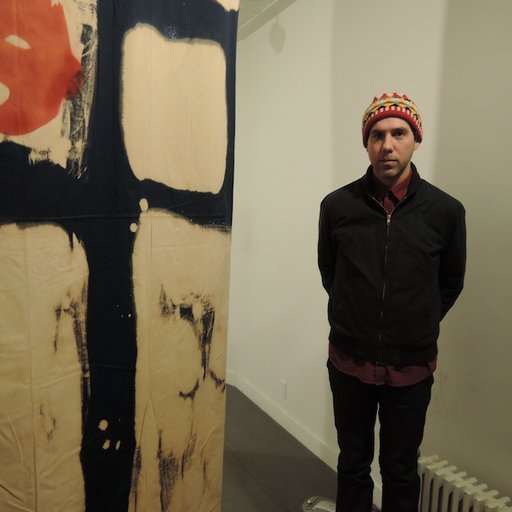As the COO and senior art advisor of Tang Art Advisory, a firm based in in New York, Miami, London, and Hong Kong, Annelien Bruins helps a wide range of clients manage their collections, facilitating everything from the first purchases of a novice buyer to the maintenance and select deaccessioning of mature art holdings. The founder in 2007 of Bruins Private Collections Consultancy in London, Bruins has lectured at both Christie's and Sotheby's about the nuances, risks, and considered strategies of stewarding one's art acquisitions.
Artspace editor-in-chief Andrew M. Goldstein spoke to the art advisor about her firm, and how she goes about helping clients manage their art.
How did you come to be an art advisor? What initially drew you to art, and how did you acquire expertise in the field over the years?
I've always loved art. I used to draw a lot as a child, and I really enjoyed my art classes because our teacher allowed us to explore our own creativity which was great fun. What fascinates me about art is the creative process, the ability of an artist to make something out of nothing. I have been very lucky in my career. I started out in marketing in the Netherlands, but, at the age of 21, I moved to London and started working with two private collectors. I learned on the job and also did several courses and a degree in my field. The best way to learn about art is to handle it, and I have catalogued thousands of works in my career so far. I believe that the more art you see, the better your eye becomes—which is of paramount importance to being a good art advisor.
What range of clients do you work with?
We work with a range of clients that varies from experienced collectors to young collectors who are just starting out. For example, we provide both transactional and art asset management services to clients with large or very active collections, particularly if the art is in multiple locations. With younger collectors, there is more of a focus on education in terms of the collecting process and the mechanics of the art market.
What are the people who sign up with your firm in order to collect art looking for? Art primarily as an investment vehicle, or as a source of aesthetic value and pleasure.
My experience is that most clients are interested in acquiring works of art that they love and enjoy, and don’t buy for pure investment purposes. That said, given the tremendous interest in buying art as an investment over the last five to 10 years, clients are becoming more aware of the financial aspects of buying art, which means they are more discerning and specific about their acquisitions—and that is where we come in to advise them. The key to investing in art is to buy quality work, which will hold its value over time.
How would you describe the value of art as an investment vehicle? Do you recommend collecting art as a way to increase one's financial assets, in the way that people invest in stocks?
What most people do not realize about the art market is that the record prices you see at auction have very little to do with the underlying markets. In other words, there have certainly been occasions where artworks have had a phenomenal return on investment. Art can be a great investment if you can get it at the right price and sell it at the right time. However, not all art increases in value all the time, and art is subject to market fluctuations just as stocks are. The problem with art is that artworks, as opposed to stocks, are highly illiquid, which means that the sales process can be long and difficult because of the opacity of the art market. An investor needs to take this into account when buying art for investment purposes.
What kind of art do you work with for the most part? Primary or secondary market? Established or emerging artists?
All of the above. We are a full-service art advisory firm providing our clients with access to the whole market, whether primary or secondary market, whether established or emerging. We save our clients time and money by doing the legwork for them—we keep up to date with artists, we source works for our clients, we perform price research and due diligence, we negotiate the transactions, and we have the works installed in our clients’ homes.
Where do you source the art? Do you ever steer your clients online, to sites like Artspace?
We source art everywhere from high-end galleries to artists' studios to auctions. We also source art online. I think there is no issue with buying online when the vendor is reliable and the client is able to view all the information required prior to purchase, as in condition reports, provenance, high-res photos, and so on.
What is the spectrum of prices of the art that you deal with and how do you charge?
We have extensive experience in handling any value, from works by emerging artists to multimillion-dollar museum pieces. Our standard commission rate is 10 percent for transactions. Art asset management contracts are usually retainer-based.
What are the attributes of an excellent art advisor?
Excellent art advisors understand that they have a fiduciary duty towards their client. They are always transparent to their clients about pricing and how they work. They never get remunerated by both parties of one transaction. Additionally, I believe that art advisory is about assisting the client with their requirements rather than applying a cookie-cutter approach to all of their clients. Art advisory is not about imposing my own personal preferences onto my clients—it's about assisting the client in their collecting goals and allowing them to put their own mark on their collection.
Can you describe the process you go through with a client who signs up with your firm? How does the relationship begin, and how does it evolve over time?
It depends on the project, but getting to know a client can be a long process because it really is a relationship based on trust. We usually get recommended by existing clients or by one of our colleagues in the wealth management, trust and estate, or interior design communities. We then meet with the client, assess their requirements, and submit a proposal, after which we start working together. A collaboration usually evolves over time as you get to know each other, which makes it easier to work together. Sometimes the nature of the collaboration changes too, for example a client who has engaged you to buy on their behalf wants you to start selling too.
Do you also help your clients install their art in their homes? If so, what considerations does this entail?
Yes we do. The key to installing works is to have great technicians, especially when you're dealing with larger and heavier works. You need to ensure the hanging system can support the piece, avoid destroying the wall, and so on. One tip for collectors: I find oftentimes that when I do condition checks for clients, if works are hung from nails in the wall, the area around the nail becomes brittle, leaving the nail to become loose in the wall, which means the artwork can fall off easily. This is something to check every once in a while.
In addition to helping your clients acquire art, you help them sell art too. What avenues do you go through to do this? Do you offer the art of one client who is selling to another client looking to buy?
We explore the most appropriate sales channels and we narrow down the options until we decide, in collaboration with the client and their advisors, what would work best for the client. Sometimes the best route is to sell through the auction houses, sometimes to sell privately. That said, we don’t operate on two sides of one transaction, as there is a clear conflict of interest. In the case you describe above, we would ensure that one of our clients is referred to a colleague art advisor and/or an art lawyer, and we would be completely open to both of our clients about the situation.
Do you ever help your clients put work up for auction? If so, what considerations lead you to advise a client to auction a work rather than sell it privately? What are the benefits, and drawbacks, of the different approaches?
It depends on the artwork. Some works have a better shot at selling at auction that others, because they are very rare, have a stellar provenance, or have not been on the market for a long time. The auction houses also have the ability to strongly market the works they put in their auctions. The drawback of going through an auction, though, is that if the work doesn't sell everybody knows about it—auction records are public. Therefore, selling privately has its advantages. If a work doesn’t sell at auction it is “burned” and cannot often be brought back to the market for a while, even privately. That doesn't mean that a work cannot be "shopped around" on the private market, but I have seen cases of this happening and it is detrimental to the work.
























